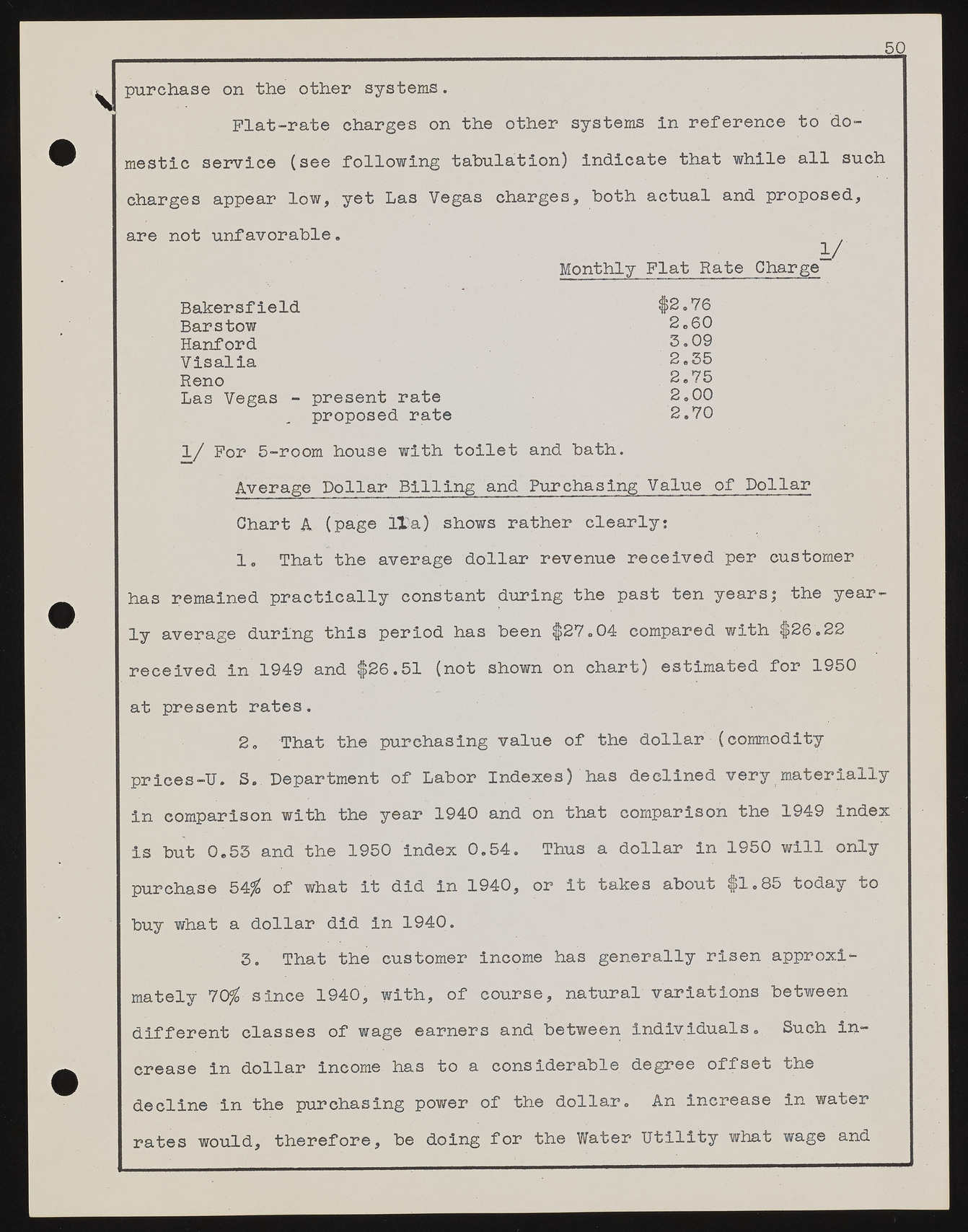Copyright & Fair-use Agreement
UNLV Special Collections provides copies of materials to facilitate private study, scholarship, or research. Material not in the public domain may be used according to fair use of copyrighted materials as defined by copyright law. Please cite us.
Please note that UNLV may not own the copyright to these materials and cannot provide permission to publish or distribute materials when UNLV is not the copyright holder. The user is solely responsible for determining the copyright status of materials and obtaining permission to use material from the copyright holder and for determining whether any permissions relating to any other rights are necessary for the intended use, and for obtaining all required permissions beyond that allowed by fair use.
Read more about our reproduction and use policy.
I agree.Information
Digital ID
Permalink
More Info
Rights
Digital Provenance
Publisher
Transcription
50 purchase on the other systems. Plat-rate charges on the other systems In reference to domestic service (see following tabulation) indicate that while all such charges appear low, yet Las Vegas charges, both actual and proposed, are not unfavorable. I m Monthly Flat Rate Charge Bakersfield $2.76 Barstow 2.60 Hanford 3.09 Visalia 2.35 Reno 2.75 Las Vegas - present rate 2.00 proposed rate 2.70 1/ For 5-room house with toilet and bath. Average Dollar Billing and Purchasing Value of Dollar Chart A (page l l 'a ) shows r a t h e r c le a r ly : 1. That the average dollar revenue received per customer has remained practically constant during the past ten years; the yearly average during this period has been $27.04 compared with $26.22 received in 1949 and $26.51 (not shown on chart) estimated for 1950 at present rates. 2. That the purchasing value of the dollar (commodity prices-U. S. Department of Labor Indexes) has declined very materially in comparison with the year 1940 and on that comparison the 1949 Index Is but 0.53 and the 1950 index 0.54. Thus a dollar in 1950 will only purchase 54$ of what it did in 1940, or it takes about $1.85 today to buy what a dollar did In 1940. 3. That the customer income has generally risen approximately 70$ since 1940, with, of course, natural variations between different classes of wage earners and between individuals. Such increase in dollar income has to a considerable degree offset the decline in the purchasing power of the dollar. An increase in water rates would, therefore, be doing for the Water Utility what wage and

